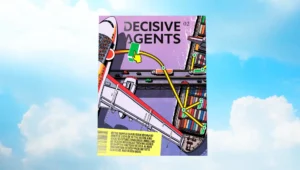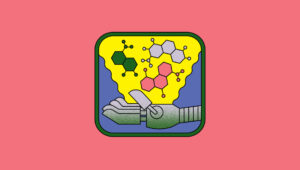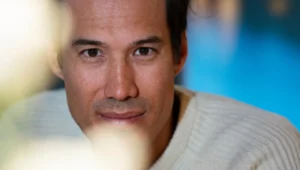Decisive Agents: Rock star Jack White – of White Stripes fame – called his recent world tour the “Supply Chain Issues Tour.” With pop culture increasingly talking about the supply chain, do people working in the supply chain feel more like rock stars?
Peter Grimvall: It’s crazy. You know when your mother asks what you do? It’s always a bit of a difficult question. Now suddenly it’s become a bit easier. But of course, if she wanted to buy something and she couldn’t – that’s not great. But at least there’s a bit of a better understanding.
What sets IKEA’s approach apart?
We say IKEA is truly a supply chain-oriented retailer. The supply chain really comes in at the very start. From there, our focus is on sustainability, quality, design, function, and low price for our customers.
That means if we see an opportunity – or if we see a must – to integrate vertically, to own and make it part of our business. We do it. That makes IKEA unique. That means we can create strong connections and share data across the IKEA family. Our point of sale connects with our suppliers.

And you champion simplifying, then optimising.
You might think it’s easy to optimise, but it’s actually difficult. It’s a simple mathematical problem when you have a single number and then optimise that to the lowest number. Add a second and it becomes more complicated.
One big mistake we can make in the supply chain is if, say, 10 factors impact the supply chain and we randomly pick three. We try to optimise those and assume that’s good for the whole thing. It might not be. That’s why it’s so important to simplify to first understand and separate the signal from the noise.
If, for example, you want to predict next week’s sales, or next month’s. You need to filter. ‘Okay, these factors are super important and these factors can influence but are not critical.’ If you want to model something, the more complex the model, the more exposed you are to making mistakes. You need to know how to make a simple model. So simplify first and then optimise the factors you select.
It’s crucial we have people in our supply chain who are really focused on our set objectives. This keeps us moving forward and not getting stuck just managing a situation. If you’re just firefighting, it’s ‘Whack-a-Mole’ – that game kids play – where you push on something and something else pops up. You have to solve the root cause problem to move forward.
“Physical tests take time and cost a lot of money. By running those scenarios digitally first, it’s much more cost efficient and much faster.”
You mentioned models, are you referring specifically to computer science?
A computer science model. That’s how most things are built today. You digitally mirror your supply chain. Of course, to mirror the entire supply chain is very complex. But you mirror a part and a specific time horizon – that is how we do most things today. Physical tests take time and cost a lot of money. By running those scenarios digitally first, it’s much more cost efficient and much faster.
To help us imagine IKEA’s supply chain, can you describe, say, a Billy bookcase’s journey?
For the Billy bookcase, we source from a forest in southern Sweden where IKEA has its own board mill, which also produces particle board, the bookshelf’s main component. That’s sent to a factory 150 km away where we make the product.
Now, this product sells in huge volumes so we try to deliver directly to our stores, or customer distribution centres – with no warehouse in between. With such big volumes, we can pack a truck that goes straight to the store. The stores usually sell so much that they want a full truckload. We have more complex products too like my favourite, the 365 food container, it’s glass with a plastic lid – which gets more complicated.

Do you have tricks for managing inventory?
We are very much a demand-driven setup. Say your closest store is the Wembley store in London. Our co-workers there predict how many bookshelves we’ll sell weekly for 16 weeks. They translate that into a plan, which we share with our suppliers. Having that Wembley store’s forecast means we can say ‘Okay, we are focused on selling 350 bookshelves next week.’
And this is an example too of where we are investing in AI. We have a ‘demand sensing’ solution to help our co-workers in that store consider hundreds of factors. With demand sensing AI, we can incorporate up to 200 different influencing factors. As human beings, of course it’s not so easy to have access to all those factors – let alone make sense of them.
“When the truck goes from the factory to the store, there is as little air as possible left in that truck.”
Then we optimise our transport. When the truck goes from the factory to the store, there is as little air as possible left in that truck. For us, it’s more important to fill the truck instead of being able to track and know ‘Okay, I have three days on the road, etc.’ Of course we can see where they are if it’s needed.
This idea of leaving as little breathing space as possible when packing the truck is interesting.
If you want to be a market leader in terms of low price, you have to look at every opportunity. And I think there’s also a big sustainability factor in not sending around half empty trucks for the sake of ‘just-in-time’ and so on. For us, it’s very important that all resources are used to their fullest potential.

In terms of the full truck concept, do you know the measurements of the product and then calculate the capacity in the truck?
The product designer knows the dimensions of the truck. That is key. You shouldn’t make a product and say, ‘Oh s–t, it takes up too much space in the truck.’ You factor in shipping when designing the product, because transport impacts the price we offer the customer. If you make products that don’t fit within the logistics system, automatically you increase your costs.
What supply chain data is most useful for you when it comes to sustainability?
We work with mainly the transport distance. Distance is what really drives up CO2.
You always have options to move to a supplier closer to the customer. You can optimise the network between the supplier and customer to the shortest route. What we would not do is to start up a supplier in the middle of nowhere where we are not selling anything.
And you have equipment utilisation; maximising the fill rate in all trucks and containers.
It’s not only about CO2 goals, all this helps you be competitive. It’s super difficult to be competitive if you have too long a distance between your supply and your demand. Sustainability is good business.
How do you adopt new technology?
The starting point is you have to assess the potential of the technology.
That’s not to conclude what you want to do. It’s more to conclude how fast you want to move forward. If you assess that this might have big potential in Asia then my hesitancy is very low. Because I know if we fail, we will learn something and we can apply those learnings and maybe discover another application with the same technology. If, on the other hand, the potential is limited and narrow. I’d hesitate because you will not have many side benefits if you’re not successful. Also, we’d ask ourselves: Do we want to invest in developing our capabilities? Every new technology requires new capabilities and a new set of skills for our co-workers. Together with other technologies, it also increases the complexity.
How did you introduce AI at IKEA?
AI is difficult because you experience it daily but often you take it for granted. Look at everything happening now on your smartphone, it’s there but you don’t really feel it. For me, the key moment was when I had the opportunity to experience a self-driving car. Suddenly, AI became very real. I said to myself, ‘If I’m going to work another 30 years, I need to understand this.’ That was in 2017 and I decided to study AI through an online university course.
“Suddenly, AI became very real. I said to myself, ‘If I’m going to work another 30 years, I need to understand this.’”
It was actually at the Christmas party where I made a quick pitch to my boss and said ‘You know, I think there is a big potential in this machine learning. We can start a big programme and assess, deliver a plan – or let me to hire two people next month and we start.’
That was a Friday evening and I figured everything was probably forgotten, but on Monday morning I popped by. He said ‘Yeah, that’s okay.” I went ahead and hired those two people. And that’s how we started. We assessed different things and these were the people building our first demand sensing product – which we now use for nearly 90% of our store forecasts – and we also have other unique, own-developed products based on machine learning.

What sort of business challenges do you see future technologies being able to solve?
Let’s take machine learning as an example in introducing new technology. We found it very interesting and assessed that it could have huge potential in our supply chain. Definitely, we didn’t think for too long, it was better to get going and get started.
One area is of course, forecasting, predicting the future is known to be difficult. Machine learning helps. And another area is also to improve intelligent automation. Using machine learning to automate things that we didn’t think that we could before and another interesting area where we’re putting more focus is improving our co-workers’ experience. That is becoming more and more critical – how can we create interesting roles in the future with the help of machine learning? And how can we attract the next generation supply chain talent into this industry? If we don’t do that, I’d be very worried because talent will end up at other companies and in other fields. Without talent, of course, it’s very difficult to improve supply chain performance.




